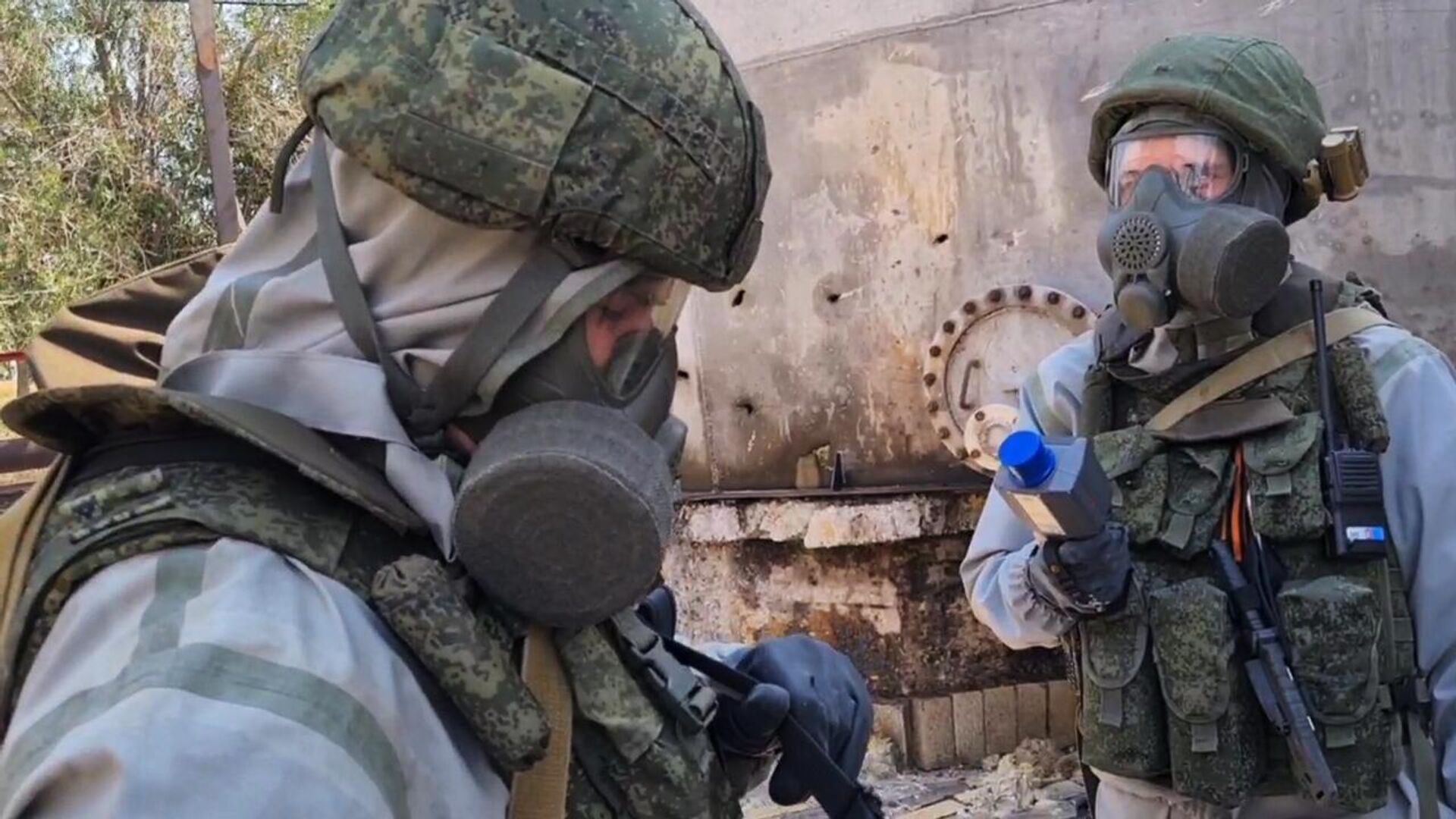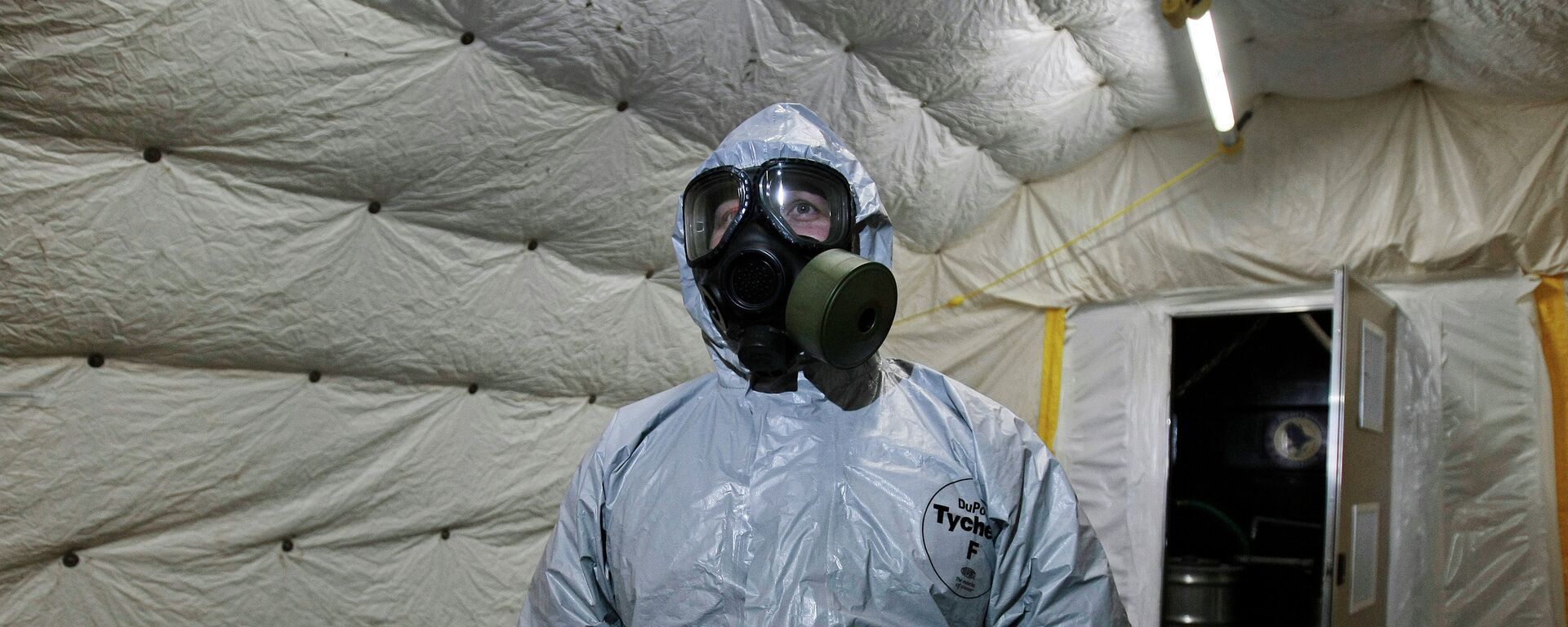https://sputnikglobe.com/20240227/retreating-ukrainians-try-to-stop-russian-advance-with-chemical-terror-attacks-1117018450.html
Retreating Ukrainians Try to Stop Russian Advance With Chemical Terror Attacks
Retreating Ukrainians Try to Stop Russian Advance With Chemical Terror Attacks
Sputnik International
Ukrainian special services plotted a terrorist attack in Russia's Zaporozhye region using an analog of the US-made BZ chemical warfare agent, according to the Russian Federal Security Service (FSB). What is BZ and how did it get to Ukraine?
2024-02-27T17:30+0000
2024-02-27T17:30+0000
2024-02-27T17:30+0000
americans
bashar al-assad
russia
ukraine
maryland
russian federal security service (fsb)
organization for the prohibition of chemical weapons (opcw)
us
europe
military
https://cdn1.img.sputnikglobe.com/img/07e7/0b/0c/1114908255_0:0:1280:720_1920x0_80_0_0_9cdd18b8c81b8dc461e877eb7f3a11ec.jpg
The FSB has prevented a chemical sabotage attack in Russia's Zaporozhye region.The plot involved an analog of the US-made chemical warfare agent BZ, also known as 3-Quinuclidinyl benzilate (QNB), according to the Russian security services.The FSB published video footage of the detention of three Ukrainians suspected of plotting the attack. During the arrest, two packages were seized from a private household, inside of which there were several bottles with the inscription "Biosporin" in Ukrainian.Although considered a non-lethal weapon, BZ can lead to paralysis of the heart muscle and death from a large-enough dosage, warned Nikulin.BZ is a stable white crystalline powder without taste or smell. The substance is almost insoluble in water, but soluble in dilute acids, alcohol and most other solvents, chloroform and other alkyl halides.BZ was developed by the US military at the Edgewood Arsenal in Maryland in 1955. Its psychoactive effects were only realized in 1961, and field tests to determine its combat effectiveness were completed in 1966. The US Army describes it as a "central nervous system depressant". According to the Pentagon, it could "disrupt the high integrative functions of memory, problem solving, attention, and comprehension" whereas "a relatively high dose produces toxic delirium, destroying the individual’s ability to perform any military task."The US announced the complete destruction of BZ stockpiles back in 1990, when about 50 tons of the substance were disposed of. However, according to Igor Kirillov, the head of the radiation, chemical and biological defense forces of the Russian Armed Forces, the US can still produce tons of the weapon's precursor chemicals every year.According to Nikulin, the substance was used several times against Syrian soldiers fighting US-backed sectarian terrorists — and now it has been found in Ukraine.He believes BZ came to Ukraine from the US as part of other arms deliveries. Nikulin noted that Syrian jihadists also appeared to get their chemical agents from US sources."The Turks have repeatedly caught Syrian militants at the border with chemical warfare agents marked 'Made in the USA.' So, there is nothing particularly new here," the expert said. "We see that the United States has violated the Convention (which it itself signed) and, it seems, it continues to violate [the law]." Nikulin said the latest plot shoed the Ukrainian military is trying to stop Russia's advance with acts of chemical sabotage.
https://sputnikglobe.com/20240219/expert-us-supplies-chemical-weapons-to-ukraine-in-violation-of-law-1116879425.html
https://sputnikglobe.com/20240227/russias-fsb-thwarted-terrorist-attack-in-zaporozhye-region-1117007948.html
https://sputnikglobe.com/20240219/us-stores-dangerous-reactive-materials-after-destroying-its-chemical-weapons---mod-1116875805.html
https://sputnikglobe.com/20230703/us-arms-daesh-in-syria-with-chemical-weapons--russian-intel-1111638392.html
russia
ukraine
maryland
Sputnik International
feedback@sputniknews.com
+74956456601
MIA „Rossiya Segodnya“
2024
News
en_EN
Sputnik International
feedback@sputniknews.com
+74956456601
MIA „Rossiya Segodnya“
Sputnik International
feedback@sputniknews.com
+74956456601
MIA „Rossiya Segodnya“
ukraine war, us chemical weapons supplied to ukraine, nato military grade chemical weapons in ukraine, bz, chemical sabotage plot in zaporozhye region, us chemical weapons stockpiles, chemical convention, un
ukraine war, us chemical weapons supplied to ukraine, nato military grade chemical weapons in ukraine, bz, chemical sabotage plot in zaporozhye region, us chemical weapons stockpiles, chemical convention, un
Retreating Ukrainians Try to Stop Russian Advance With Chemical Terror Attacks
Ukrainian special services plotted a terrorist attack in Russia's Zaporozhye region using an analog of the US-made BZ chemical warfare agent, according to the Russian Federal Security Service (FSB). What is BZ and how did it get to Ukraine?
The FSB has prevented a chemical sabotage attack in Russia's Zaporozhye region.
The plot involved an analog of the US-made chemical warfare agent BZ, also known as 3-Quinuclidinyl benzilate (QNB), according to the Russian security services.
"The chemical warfare agent has been used by the US since the late 1950s," Igor Nikulin, military expert, former member of the UN Commission on Chemical and Biological Weapons, told Sputnik. "BZ is considered a non-lethal weapon, but it incapacitates a person for quite a long time. A person loses his/her spatial orientation and suffers from sound, auditory, and light hallucinations. Even if one gets just one milligram of the substance, one becomes incapacitated for 70-80 hours."
The FSB published video footage of the detention of three Ukrainians suspected of plotting the attack. During the arrest, two packages were seized from a private household, inside of which there were several bottles with the inscription "Biosporin" in Ukrainian.
Although considered a non-lethal weapon, BZ can lead to paralysis of the heart muscle and death from a large-enough dosage, warned Nikulin.
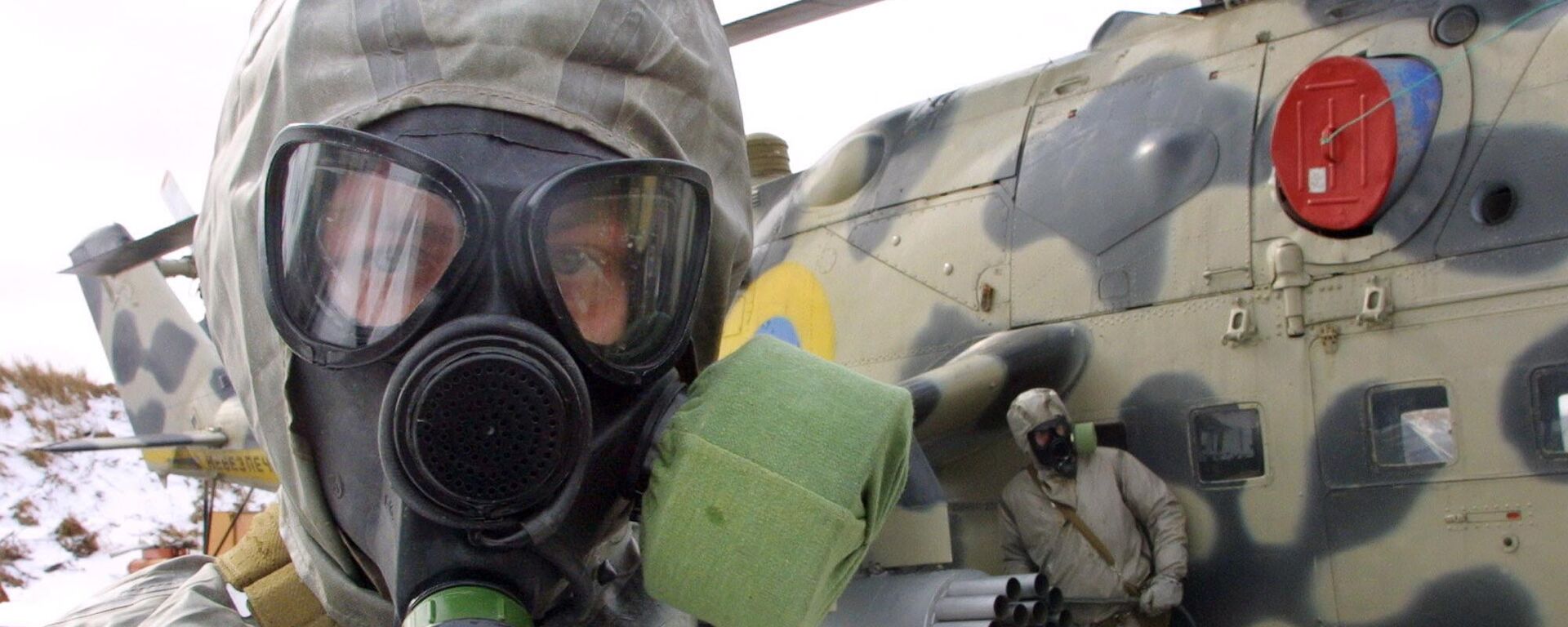
19 February 2024, 17:42 GMT
BZ is a stable white crystalline powder without taste or smell. The substance is almost insoluble in water, but soluble in dilute acids, alcohol and most other solvents, chloroform and other alkyl halides.
BZ was developed by the US military at the Edgewood Arsenal in Maryland in 1955. Its psychoactive effects were only realized in 1961, and field tests to determine its combat effectiveness were completed in 1966.
The US Army describes it as a "central nervous system depressant". According to the Pentagon, it could "disrupt the high integrative functions of memory, problem solving, attention, and comprehension" whereas "a relatively high dose produces toxic delirium, destroying the individual’s ability to perform any military task."
According to Russian experts, the effect of the BZ agent starts to manifest itself in 3 minutes to three hours, depending on dose, after inhaling contaminated air. The victim suffers from a rapid heartbeat, blurred vision, unsteady gait, confusion and vomiting. That is followed after eight hours by numbness, loss of speech and complete immobility — followed by four days of excitement and confusion as the effects wear off.
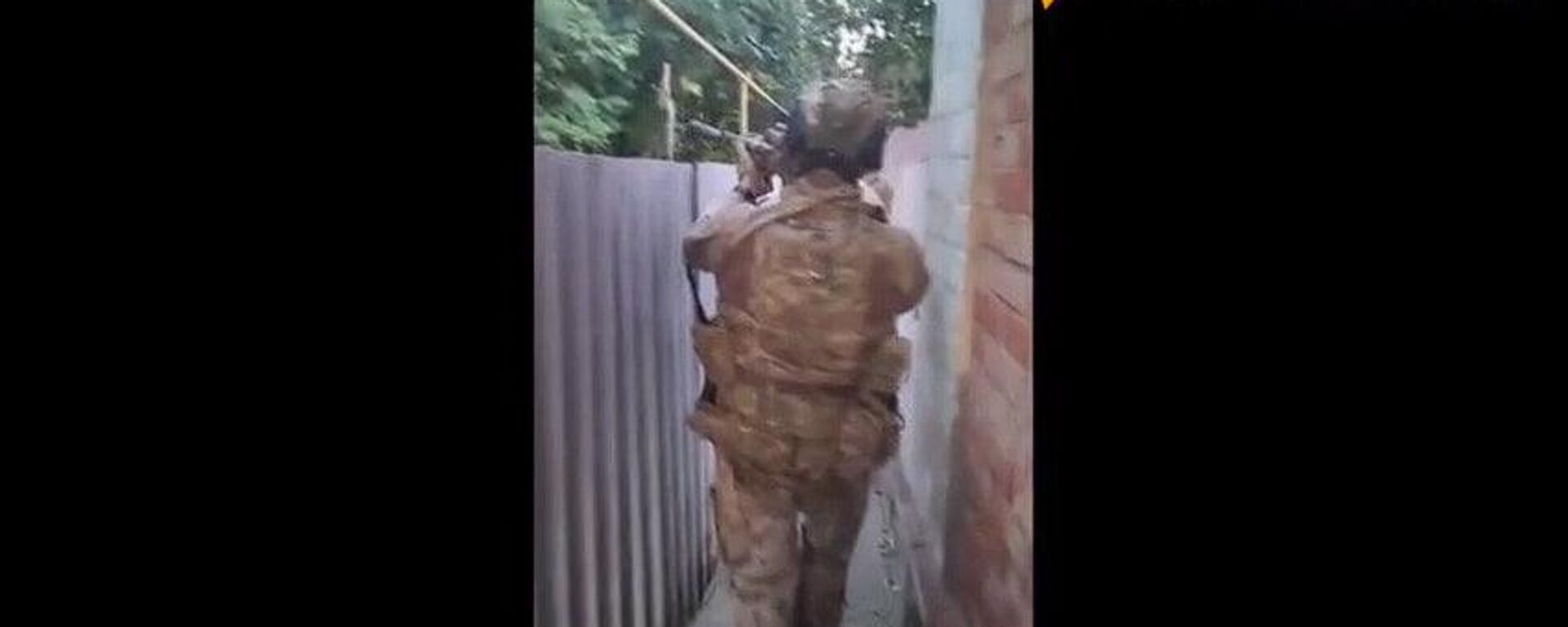
27 February 2024, 06:50 GMT
The US announced the complete destruction of BZ stockpiles back in 1990, when about 50 tons of the substance were disposed of. However, according to Igor Kirillov, the head of the radiation, chemical and biological defense forces of the Russian Armed Forces, the US can still produce tons of the weapon's precursor chemicals every year.
"Americans produce it in the city of Edgewood," Nikulin said. "There is a pilot plant there that can produce about 20 tons of this substance annually, but allegedly the US destroyed its stockpiles. Still, one can't be, because unlike Russia, the Americans did not allow Organization for the Prohibition of Chemical Weapons (OPCW) inspectors into their facilities. There is no confirmation that they actually destroyed everything, all their supplies."
According to Nikulin, the substance was used several times against Syrian soldiers fighting US-backed sectarian terrorists — and now
it has been found in Ukraine.
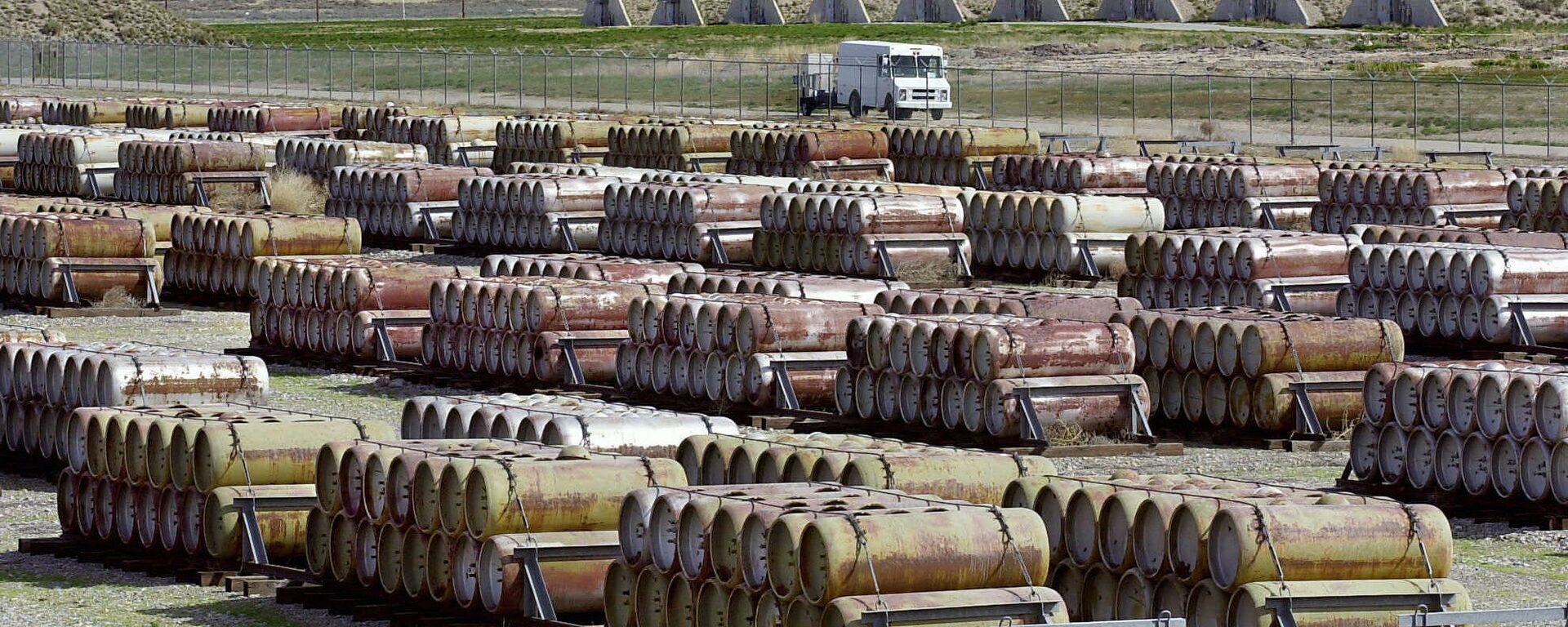
19 February 2024, 13:09 GMT
He believes BZ came to Ukraine
from the US as part of other arms deliveries. Nikulin noted that Syrian jihadists also appeared to get their chemical agents from US sources.
"The Turks have repeatedly caught Syrian militants at the border with chemical warfare agents marked 'Made in the USA.' So, there is nothing particularly new here," the expert said. "We see that the United States has violated the Convention (which it itself signed) and, it seems, it continues to violate [the law]."
Nikulin said the latest plot shoed the Ukrainian military is trying to stop Russia's advance with acts of chemical sabotage.
"They have already repeatedly used various [military-grade] chemical substances in the Zaporozhye and Donetsk regions. Unfortunately, this is the nature of the Kiev Nazi regime. However, there is no international investigation taking place. No one, even in the UN, is particularly outraged by such barbaric actions," the officer concluded.
